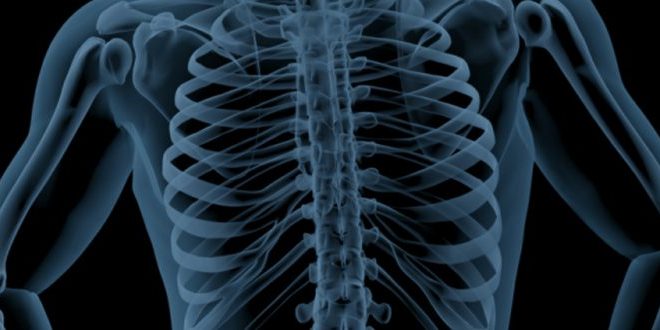Improving Sleep Through Cranial Adjustments
Poor sleep often has deeper roots than habits or screens—it can stem from cranial tension and nervous system imbalance. Gentle cranial adjustments restore subtle motion in the skull, relieve pressure on cranial nerves, and improve vagus nerve function. This helps the body shift from fight-or-flight into rest-and-digest, allowing deeper, more restorative sleep. Patients frequently notice calmer breathing, reduced jaw tension, and easier relaxation at night.

Sleep issues are everywhere—millions of people lie awake night after night, struggling to fall asleep or stay asleep. While many reach for sleep aids, blue light blockers, or strict bedtime routines, few ever consider a deeper, structural cause: tension within the skull and the nervous system.
Your head is more than just a container for your brain. The bones of the skull, the flow of cerebrospinal fluid, and the function of cranial nerves all play a powerful role in regulating the systems responsible for restful, restorative sleep. When these systems are under stress—whether from jaw clenching, past head trauma, poor posture, or even developmental tension—the body may struggle to shift into the “rest and digest” state needed for sleep.
Cranial tension can interfere with the parasympathetic nervous system, block healthy circulation of cerebrospinal fluid, and compress the very nerves that control breathing, heart rate, and internal calm. The result? A body that stays stuck in overdrive, unable to fully unwind.
At Mountain Movement Chiropractic & Natural Health, we take a different approach to sleep issues. Instead of treating sleep like a surface-level symptom, we start at the source—your nervous system—and work our way out. Through gentle, targeted cranial adjustments, we help restore proper function at the top of the spine and within the bones of the skull, where so many of the body’s key regulatory systems begin.
This isn’t about force or cracking—it’s about restoring subtle motion, balance, and communication within your brain-body connection. When your nervous system can finally downshift, your body begins to do what it was designed for: rest, repair, and recover.
The Anatomy of Sleep and the Skull
The Cranial-Nervous System Connection
The adult skull is made up of 22 bones, many of which are connected by cranial sutures—fibrous joints that allow for small, rhythmic movements. These movements are essential for the circulation of cerebrospinal fluid (CSF), the fluid that cushions the brain and spinal cord, clears metabolic waste, and supports neurological balance.
If cranial bones become restricted—due to trauma, tension, poor posture, or chronic clenching—CSF flow can be disrupted. That stagnation can lead to pressure buildup, inflammation, and impaired brain function, all of which negatively affect sleep regulation.
Nestled at the base of the skull is the brainstem, the command center for automatic functions like breathing, heart rate, and sleep-wake cycles. It’s also where 12 cranial nerves originate—each responsible for critical functions such as facial sensation, jaw movement, swallowing, hearing, and inner ear balance. If cranial tension compresses or irritates these nerves, the body may struggle to downshift into a restful state.
Parasympathetic Pathways: The Role of the Vagus Nerve
One of the most important players in this system is the vagus nerve, the primary component of the parasympathetic nervous system—also known as the “rest and digest” branch. The vagus nerve influences everything from heart rate and digestion to mood and sleep. It acts as a brake pedal for the body, telling the system when it’s safe to slow down.
When the base of the skull or upper cervical spine is tight or misaligned, vagal tone can be suppressed. This means the body has trouble exiting the “fight or flight” state—even at night. Symptoms may include racing thoughts, shallow breathing, digestive issues, or waking frequently during sleep.
Gentle cranial adjustments can help relieve pressure at the base of the skull, allowing the vagus nerve to function properly. This supports not only deeper sleep but also better heart rate variability, improved gut function, and a greater sense of calm overall.
What Are Cranial Adjustments?
Cranial adjustments are a highly specialized, gentle approach to chiropractic care that focuses on the bones of the skull, the jaw, and the upper neck. Unlike the more familiar “pop and crack” style adjustments to the spine, cranial work uses light, sustained pressure to restore subtle motion and balance in the structures that protect and influence your brain and nervous system.
This work is especially powerful for those struggling with nervous system regulation, including poor sleep, chronic stress, anxiety, headaches, and tension patterns that don’t resolve with traditional care.
The Technique: Subtle, Targeted, and Highly Effective
Cranial adjustments involve gentle contact on specific points around the skull, jaw, face, and base of the neck. These are not manipulations, but precise pressure holds designed to:
- Release tension in cranial sutures — the joints between the bones of the skull
- Normalize cerebrospinal fluid (CSF) flow — supporting detoxification and neurological clarity
- Reduce pressure on cranial nerves — allowing better signaling for functions like breathing, digestion, heart rate, and sleep-wake cycles
The technique also supports parasympathetic activation, which helps shift the nervous system from a high-alert state into a more relaxed, regenerative mode. For those stuck in the “fight or flight” loop, this is often the key to unlocking better sleep and deeper recovery.
Why It’s Different From Traditional Chiropractic
Cranial adjustments are subtle—but that’s their power. They don’t rely on speed, thrust, or audible pops. Instead, they’re designed to work with the nervous system, not against it.
This makes cranial work ideal for:
- Patients with anxiety or sensory sensitivity
- Post-concussion or post-trauma recovery
- TMJ and jaw tension
- Children and infants
- Anyone needing a nervous system reset rather than a structural force adjustment
Because these adjustments are so gentle, many patients find them surprisingly relaxing. It’s common to feel a wave of calm or even fall asleep during a session—often a sign that the body is finally letting go of stored tension.
How Cranial Adjustments Support Better Sleep
Nervous System Regulation
When the nervous system is stuck in "fight or flight," the body remains hyper-alert—even when you're physically tired. Racing thoughts, restless legs, or waking up at 2:00 a.m. wide awake? These are often signs that your brain hasn’t fully shifted into "rest and digest."
Cranial adjustments support this shift by calming overstimulated nerve pathways and reducing pressure around the brainstem. This helps regulate autonomic functions like body temperature, heart rate, and melatonin rhythms—allowing your body to fall into a more natural sleep cycle.
Vagus Nerve Activation
The vagus nerve plays a vital role in sleep, digestion, and relaxation. When it's compressed or underactive, it can lead to insomnia, shallow breathing, or a racing heart at night. Gentle cranial work—especially around the jaw, ears, and upper neck—can stimulate vagal tone, which promotes:
- A slower, more regulated heart rate
- Calm breathing
- Deeper parasympathetic (healing and rest) activity
This is why many patients feel a wave of calm during or after their session—it’s their vagus nerve finally signaling that it’s safe to rest.
Tension Release: Jaw, Face, and Head
For patients who grind their teeth, clench their jaw, or experience chronic facial tightness, cranial adjustments can be transformative. Releasing stored tension in the jaw and cranial muscles improves not only comfort, but also the ability to fully relax when lying down.
This is especially helpful for:
- TMJ-related insomnia
- Headaches that worsen at night
- Restless sleep due to facial or scalp tightness
By unwinding these patterns, cranial care makes it easier for the brain to settle and stay asleep.
Improved Breathing and Sinus Flow
Proper airflow is essential for quality sleep—especially during deep, oxygen-rich phases of rest. Misalignments in the skull and face can restrict sinus drainage, lead to mouth breathing, or contribute to mild airway obstruction.
Cranial adjustments improve structural alignment around the nose, sinuses, and jaw, enhancing airflow and encouraging proper nasal breathing at night. This often results in:
- Less congestion or dry mouth
- Decreased snoring or night waking
- A calmer respiratory rhythm during sleep
Rest Starts in the Skull
Sleep isn’t just about winding down—it’s about how your brain and body communicate at a foundational level. When that communication is disrupted by cranial tension, poor vagal tone, or compressed nerve pathways, even the best sleep hygiene habits can fall flat.
The skull isn’t just a shell for your brain—it’s an integral part of your healing system. When motion is restored in the cranial bones and pressure is relieved from key neurological pathways, the entire body begins to settle into its natural rhythm of rest, recovery, and regeneration.
At Mountain Movement Chiropractic & Natural Health, we’ve seen firsthand how gentle, cranial-focused care can bring relief when nothing else works. If your body is tired but won’t turn off, if your mind races at night, or if you wake up feeling more drained than restored—it might be time to look higher up.
📍 Mountain Movement Chiropractic & Natural Health
1901 Laurens Road Suite E.
Greenville, SC 29607
📞 (864) 448-2073
🌐 mountainmovementcenter.com
📆 Appointments available Tuesday–Friday
💻 Virtual consults available upon request
🔗 Connect with us:
Facebook | YouTube | X (Twitter)

We Treat the
Toughest Cases
We'd love to talk with you about yours. Ask us anything and we will get back to you with a detailed answer about your case.

.jpg)




